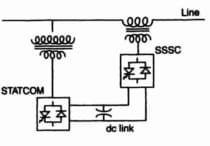1. The place where an organism lives and that provides the things the organism needs is called its_____.
a. habitat
b. population
c. species
d. community
2. Which of the following is an example of a population?
a. the cats and dogs in your neighborhood
b. the bushes and grass in a park
c. the rocks in a rock collection
d. the gray wolves in a forest
3. Counting the number of organisms in a small area and multiplying to estimate the number in a larger area is called________.
a. direct observation
b. mark and recapture
c. population density
d. sampling
4. The major way in which new individuals are added to a population is through_________.
a. sampling.
b. the birth of offspring.
c. mark and recapture.
d. emigration.
5. Which term refers to an environmental factor that prevents a population from increasing?
a. biotic factor
b. abiotic factor
c. immigration
d. limiting factor
6. The largest population that an environment can support is called its_______.
a. carrying capacity.
b. limiting factor.
c. birth rate.
d. death rate.
7. An organism’s particular role, or how it makes its living, is called its_____.
a. carrying capacity.
b. ecosystem.
c. competition.
d. niche.
8. The behaviors and physical characteristics of species that allow them to live successfully in their
environment are called________.
a. habitats.
b. limiting factors.
c. biotic factors.
d. adaptations.
9. The struggle between organisms to survive in a habitat with limited resources is called_____.
a. competition.
b. predation.
c. symbiosis.
d. parasitism.
10. An early winter frost preventing further growth in a tomato garden is an example of________.
a. carrying capacity.
b. a limiting factor.
c. a biotic factor.
d. indirect observation.
11. All of the following are examples of limiting factors EXCEPT________.
a. food.
b. soil.
c. space.
d. weather conditions.
12. An organism’s habitat must provide all of the following EXCEPT_________.
a. food.
b. water.
c. predators.
d. shelter.
13. By hunting at different times of day, hawks and owls are able to reduce________.
a. predation.
b. competition.
c. adaptation.
d. parasitism.
14. Which of the following describes an interaction in which one organism kills and eats another?
a. competition
b. symbiosis
c. predation
d. mutualism
15. All the different populations that live together in an area make up a(n)_________.
a. organism.
b. community.
c. species.
d. ecosystem.
16. When a flea is living on a dog, the dog is the________.
a. parasite.
b. host.
c. predator.
d. prey.
17. The part of an ecosystem where an organism lives and feeds is called the organism’s __________.
ANS: Habitat
18. All the biotic and abiotic factors in an area together make up a(n) __________.
ANS: Ecosystem
19. Prairie dogs, snakes, and grass make up a level of ecological organization called a(n)________.
____________________.
ANS: Community
20. All the prairie dogs in one area are an example of a(n) ______________.
ANS: Population
21. Water, sunlight, and soil are ____________________ factors in an ecosystem.
ANS : Abiotic
22. Two abiotic factors that are needed for photosynthesis are sunlight and ____________________.
ANS: Water
23. The ____________________ method of estimating involves multiplying the number of organisms
in a small area to find the number in a larger area.
ANS : Sampling
24. Observing animal tracks is an example of ____________________ observation, which is used to estimate population size.
ANS: Indirect
25. The species which occupy new territory, often supplanting native species by occupying their niches, are called
a. invasive species
b. extinct species
c. endangered species
d. exotic species
26. Following step(s) can conserve the forest cover
a. prevent forest fire
b. prevention of overgrazing by cattle
c. hunting and poaching should be banned
d. all of the above
- MCQs on EVM (Environment Management) Page 1
- MCQs on EVM(Environment Management) Page 2
- MCQs on EVM(Environment Management) Page 3
- MCQs on EVM(Environment Management) Page 4
- MCQs on EVM(Environment Management) Page 6





0 Comments
If you have any doubt, feel free to ask.